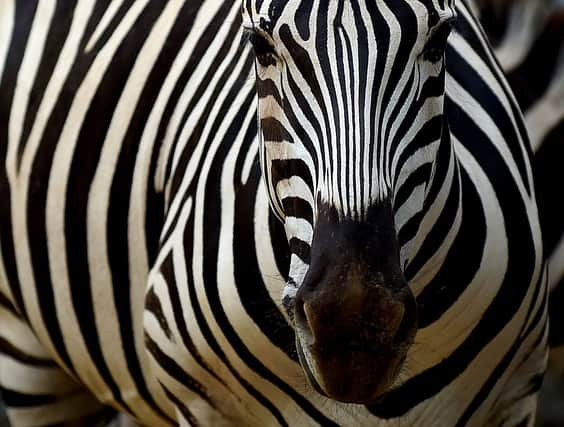We now know exactly why zebras have stripes - and it’s not for camouflage


A 10 year long study has shone light on one of nature's great mysteries - why do zebras have stripes?
According to a team of researchers, the mammals evolved to have black and whites stripes in order to confuse disease-carrying flies into landing elsewhere.
Advertisement
Hide AdAdvertisement
Hide AdIt is hoped that the findings by the Bristol University research team can be used to prevent the spread of disease among horses.
Aperture effect
The study found that horses wearing striped jackets were approached by horse flies as often as plain-clothed horses. However, flies would either not land or slow down when they approached the striped horses, the stripes apparently confusing the insect resulting in them crash landing or flying away.
Martin How, the lead researcher explained the phenomenon.
“The aperture effect is a well-known optical illusion that, in human vision, is also known as the barber-pole effect,” he said.
“Moving stripes, such as those on the rotating barber-pole signs outside barbershops, appear to move at right angles to the stripe, rather than in their true direction, so the pole appears to move upwards, rather than around its axle.
Advertisement
Hide AdAdvertisement
Hide Ad“As any fly approaches a landing surface, it will adjust its speed according to how quickly the surface expands across its vision, enabling a slowed and controlled landing.
“Stripes however disrupt this ‘optic flow’ through the aperture effect, leading the fly to believe the landing surface is further away than reality. This means the fly fails to slow down or land successfully.”
Disproven theories
The decade-long project also disproved several popular theories about the origins of the zebra’s eye-catching stripes.
Dismissed theories include the idea that the colours are used as camouflage against predators, as a means to recognise each other, or even to attract a mate.
Advertisement
Hide AdAdvertisement
Hide AdA long popular theory that the stripes helped to regulate temperature was also disregarded. It was thought that the combination of the heat absorbing black and heat reflecting white would create convection currents, or a breeze, across the animal's body.
This study was published in Proceedings of the Royal Society B